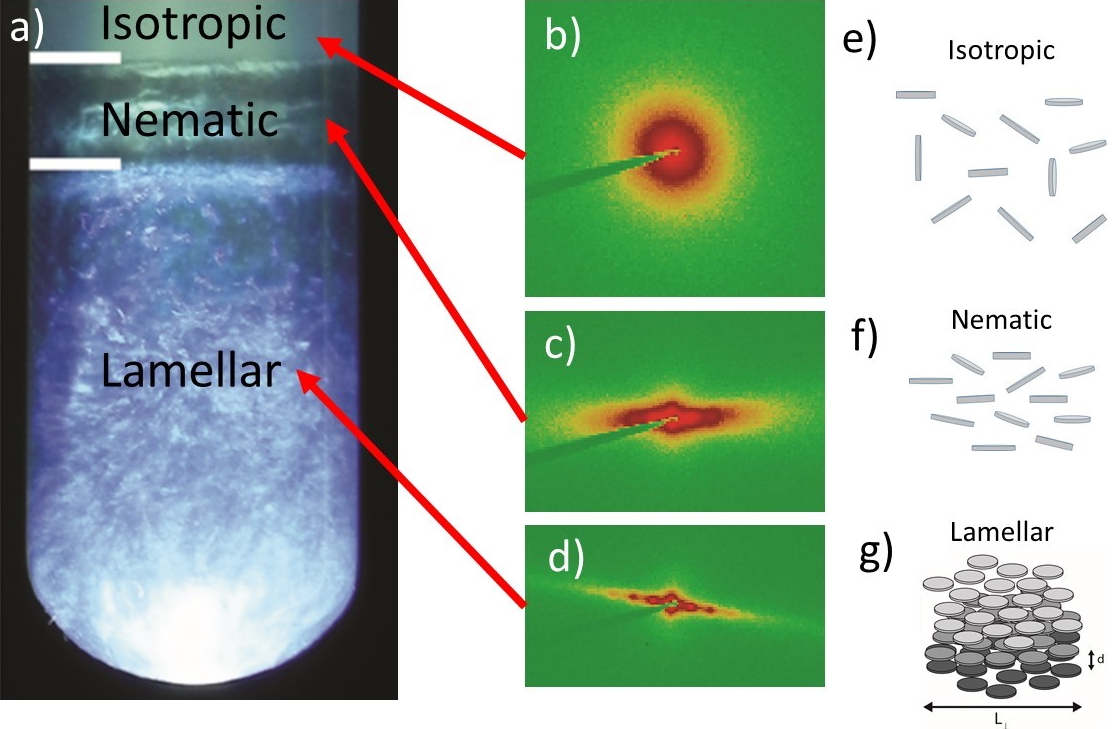Colloidal suspensions of electrically charged nanometric sheets (nanosheets), like graphene oxide or clays, which are widely used in industry, can form liquid-crystalline phases. These include the nematic phase, where all nanosheets are approximately parallel, and the lamellar phase, where they also self-assemble and form equidistant layers. The lamellar phase is an especially important one as it is at enables fluid compartmentation and therefore is a cornerstone of life as we know it. All known lamellar phase however are usually made of the self-assembly of molecules into layers. In the case of nanosheet, the existence of such a lamellar phase was still a matter of discussion. Indeed, when the nanosheet diameter is large (above 100 nm), distinguishing the nematic phase from the lamellar one is very challenging.
This study, performed in collaboration with the group of Dr. Patrick Davidson (Solid State Physics Laboratory, Orsay, UMR n°8502), unambiguously identified both phases, in H3Sb3P2O14 nanosheet suspensions. This was achieved, by various means but most importantly by using newly available synchrotron small-angle X-ray scattering setups and the analysis of our samples X-ray scattering patterns. Furthermore, the observation of the co-existence of the three phase within the same sample was made for the first time. This is another key observation to prove that these phase are structurally different. Overall, we proved that lamella of nanosheets had a minimum diameter of 20 μm, which means that each layer is made of the self assembly of at minima a thousand nanosheets. Furthermore, because the lamellar phase was rarely predicted in suspensions of charged disks, these systems should be revisited by theory or simulations.

Figure: a) An aqueous suspension of H3Sb3P2O14 nanosheet in water in a test tube; showing the co-existence of the three phases (Isotropic, Nematic and lamellar), with their distinct scattering patterns (b,c, d) and schematic of their respective ordering (e, f, g).
This project was funded by the
ERC project
REE-CYCLE (Rare Earth Element reCYCling with Low harmful Emissions, Grant Agreement n. [320915]) as well as CEA Nanoscience program and ANR project 4WATER n°ANR-17-CE04-0003.